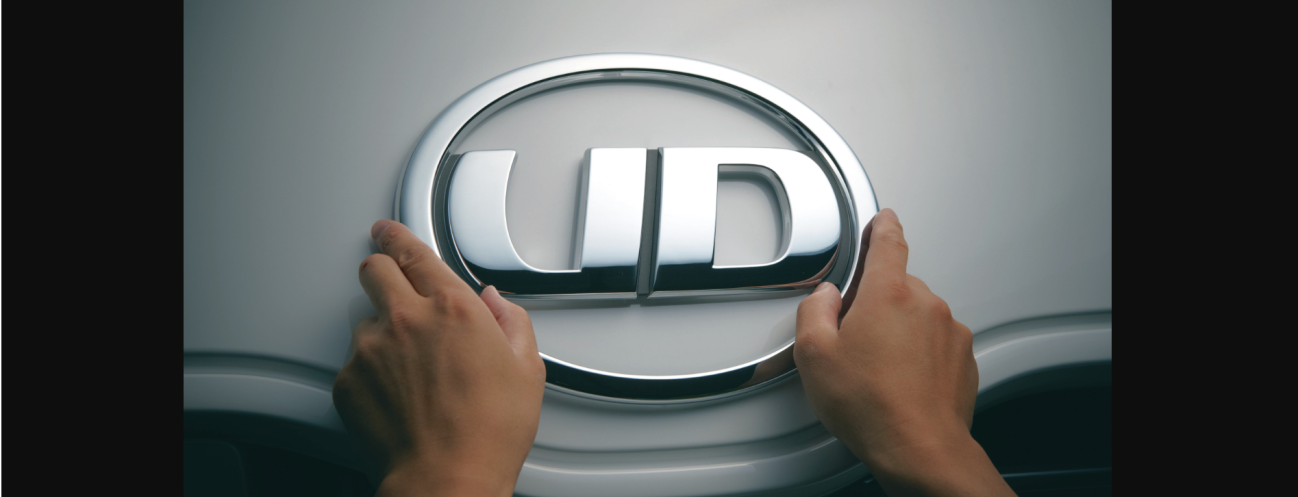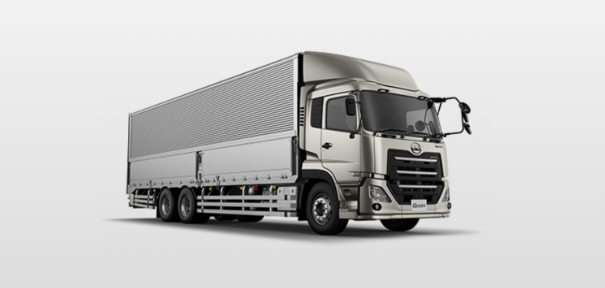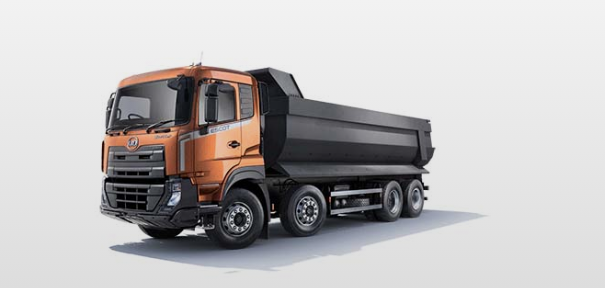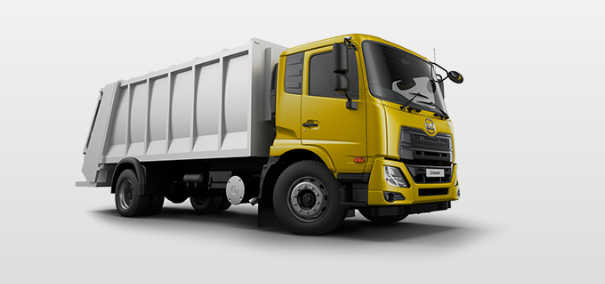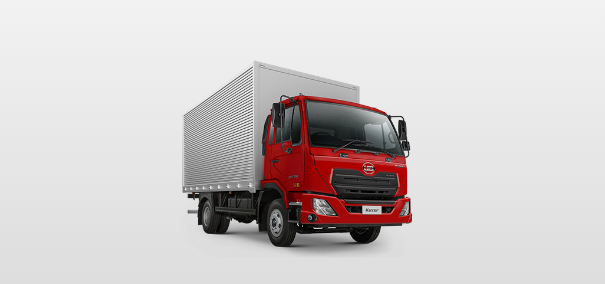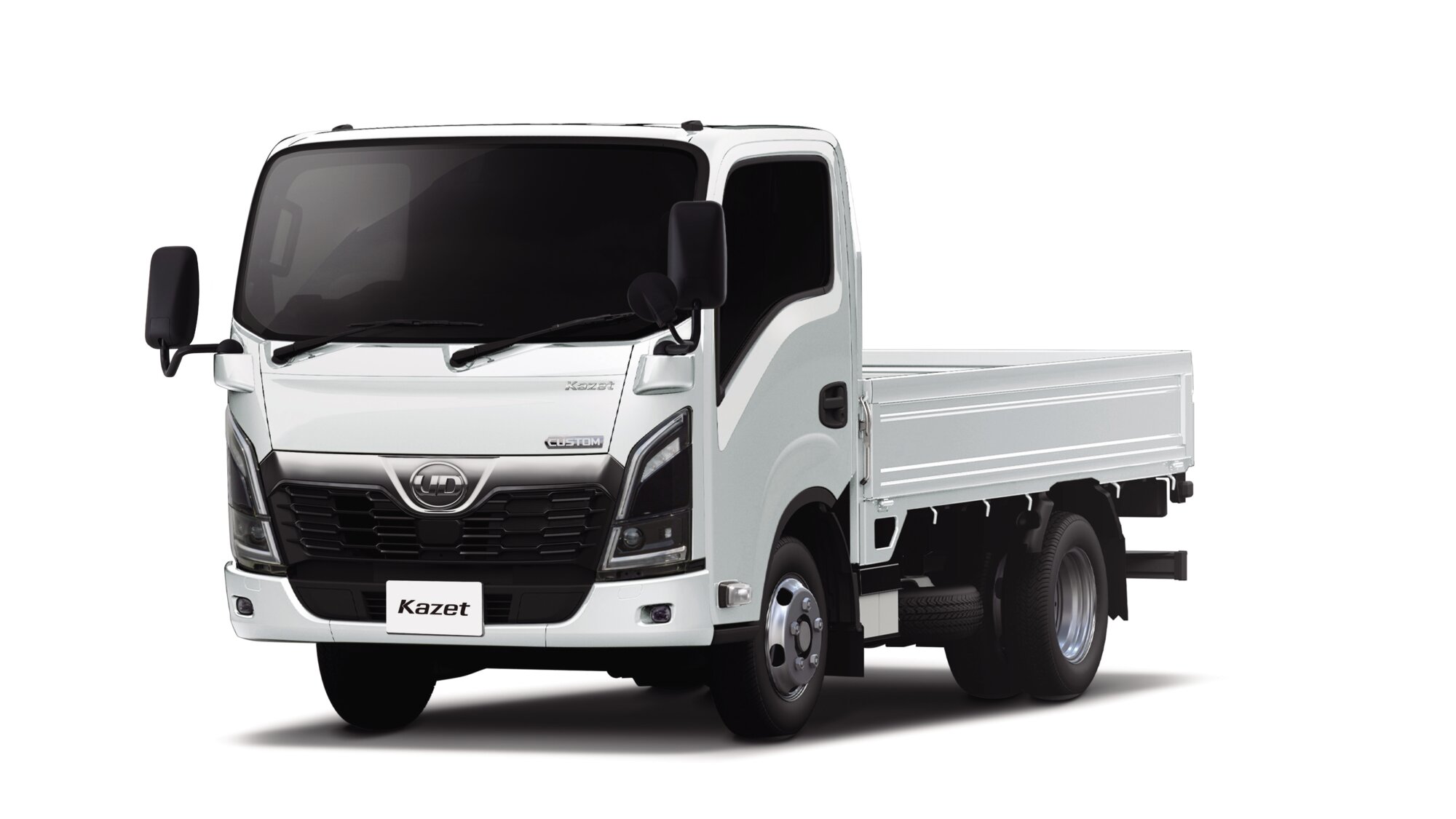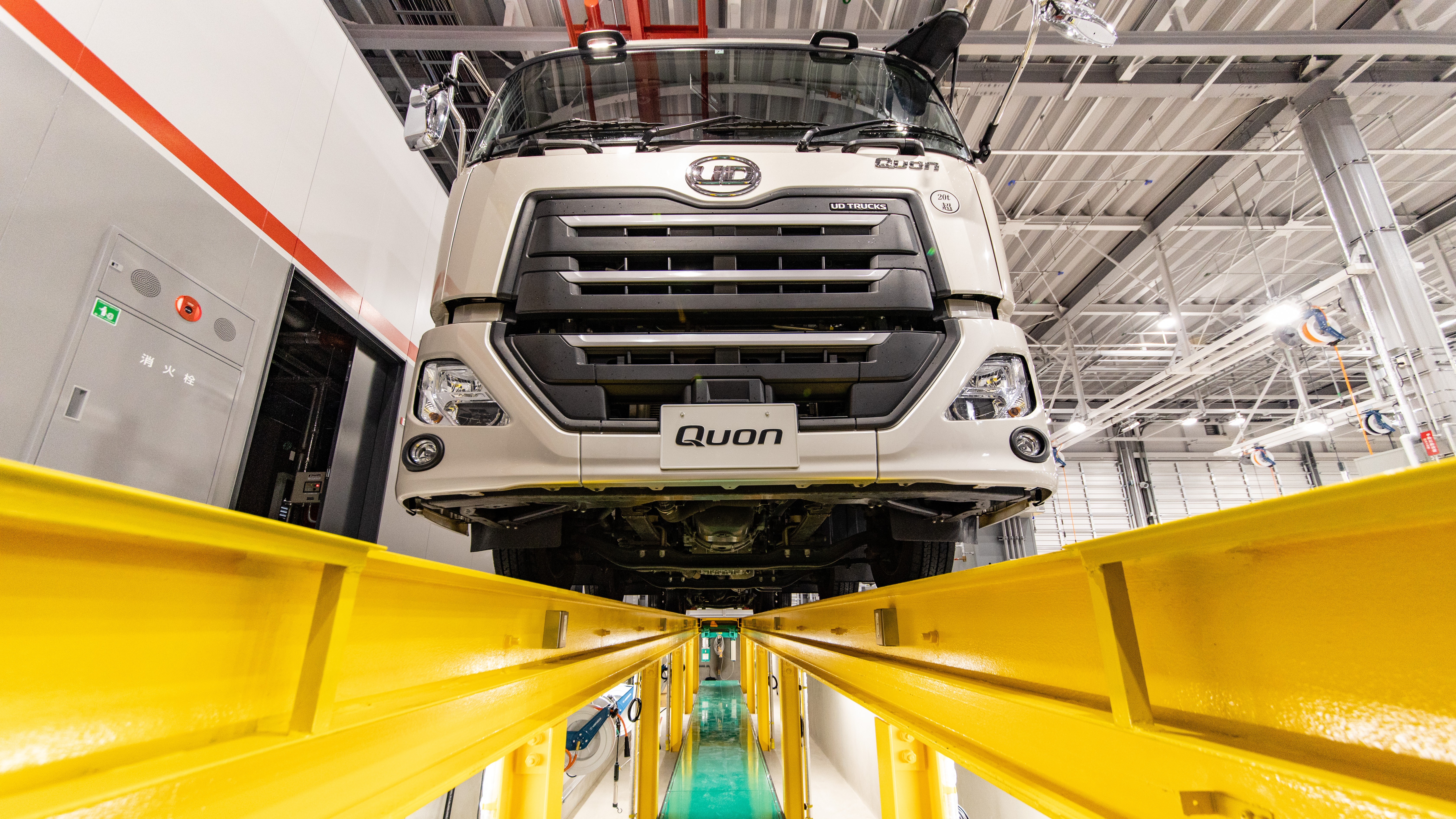Are you struggling with unplanned downtime and rising repair bills after purchasing heavy-duty trucks?
In reality, the quality of maintenance and after-sales support has a direct, material impact on operating costs.
This article explains why these services matter, how manufacturers approach them, and what to look for in a partner so you can operate safely and with confidence.
Maintenance and aftersales have become a “new criterion” for truck selection
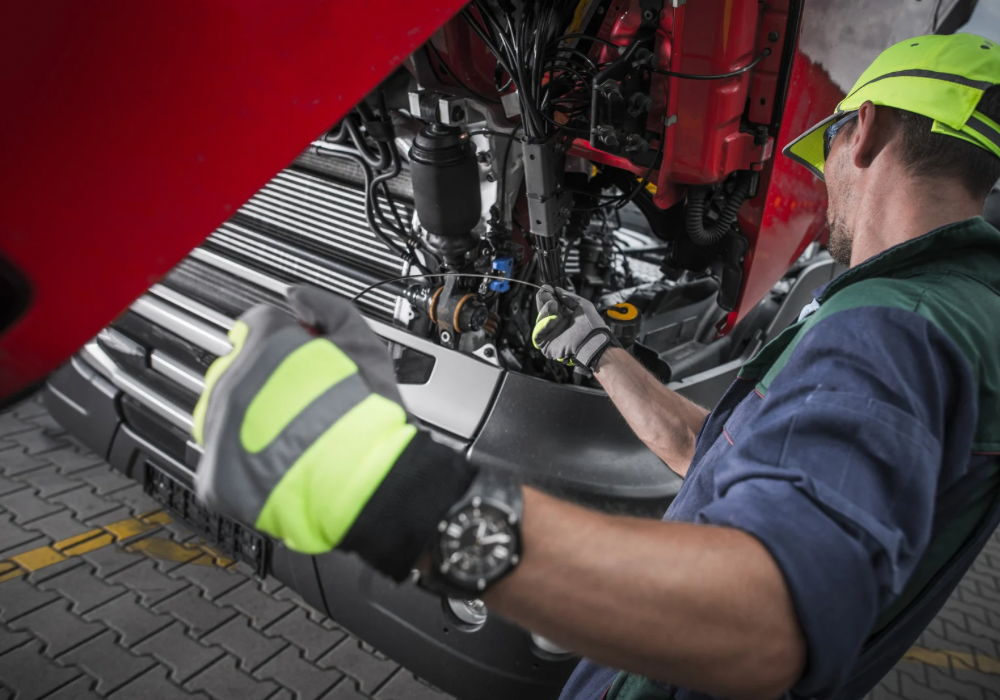
With driver shortages worsening worldwide, maximizing truck uptime is becoming mission-critical. Sudden failures that sideline vehicles only squeeze limited resources further.
Why service capability is under the spotlight now
Severe labor shortages across global logistics demand efficient operations with fewer resources.
In Japan, the number of truck drivers has been declining since 1995 and is projected to fall by about 30% between 2015 and 2030. At the same time, the average waiting time for loading/unloading per trip is 1 hour 45 minutes (and over two hours at roughly 30% of sites), dragging down actual utilization.
Against this backdrop, unexpected breakdowns place additional strain on already scarce resources. A preventive maintenance plan reduces needless downtime and enables fleets to make the most of limited people and vehicles.
Truck “weak points” and maintenance strategy
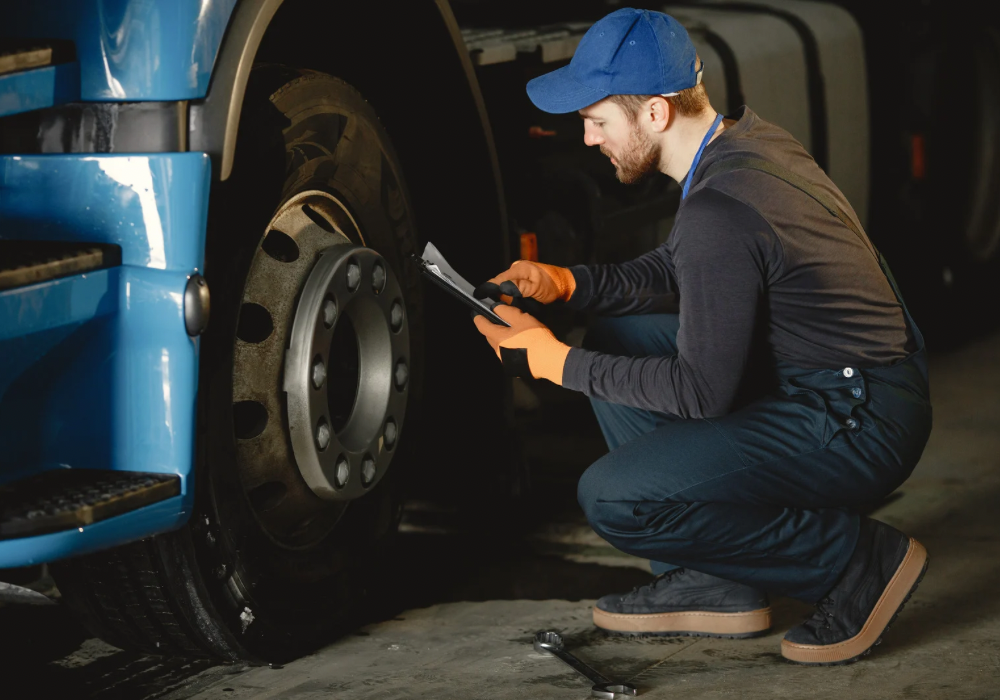
Heavy-duty trucks have components that fail more frequently; understanding these and maintaining them strategically is essential. Costs diverge sharply between preventive maintenance and after-the-fact repairs.
Common failure points and causes
Tires are the most failure-prone components—and proper inspections are vital.
According to the Kanto Transport Bureau, on expressways tires account for 49.0% of failures by component, and on general roads they still represent a high 32.1%. Punctures, blowouts, and insufficient pressure are the main culprits.
Engine and driveline issues are next most common. Deferred service can trigger secondary problems such as inadequate lubrication—pushing repair costs higher.
Cooling, electrical, and brake systems also require attention. In particular, coolant leaks and ECU faults are closely tied to harsh duty cycles and insufficient maintenance, so a planned approach is indispensable.
Cost comparison: preventive maintenance vs. reactive repairs
Investing in preventive maintenance can deliver substantial savings.
Industry surveys show scheduled preventive visits typically cost USD 200–400 per service, whereas emergency repairs after a failure can run USD 600–3,600—nearly nine times more in some cases. Downtime losses add USD 448–760 per day, which can compound to thousands or even tens of thousands of dollars in annual opportunity cost per truck.
In practice, consistent preventive maintenance has been reported to cut failure rates by up to 70% and extend vehicle life by 20%. The result: annual maintenance spends down 20–30%, with a parallel lift in uptime.
Service infrastructures by country and manufacturer
Among the world’s major truck makers, service capability varies widely. Global reach and the adoption of advanced technologies are key differentiators.
Building global dealer networks
European manufacturers excel at worldwide service coverage.
Volvo Trucks operates about 2,200 service points across 130 countries, enabling consistent support wherever trucks operate. In North America, more than 400 dealers and service locations provide 24/7 assistance, underpinned by strong infrastructure for both rapid repairs and planned maintenance.
Daimler Truck maintains production and service facilities worldwide, including service points equipped for remote diagnostics. 24-hour roadside support is also in place, enabling consistent service delivery on a global scale.
Iveco serves customers in 160+ countries with a network of 5,000 sales and service points, supported by seven manufacturing sites and eight R&D centers to secure regional service capacity.
Together, these networks help ensure comparable service experiences across countries and regions.
OEM collaboration and integrated service models
Cross-manufacturer collaboration is raising the bar for the entire industry.
In 2024, the Volvo Group and Daimler Truck launched a joint venture to develop a software-defined vehicle OS, creating a common platform for operations and diagnostics. This shared infrastructure will enable more unified maintenance and diagnostic approaches across brands.
In addition, Isuzu and the Volvo Group have a strategic partnership that strengthens technology, sales channels, and aftersales collaboration in commercial vehicles—including UD Trucks. Industry-wide cooperation is enabling more efficient and comprehensive service offerings.
UD Trucks’ differentiation strategy
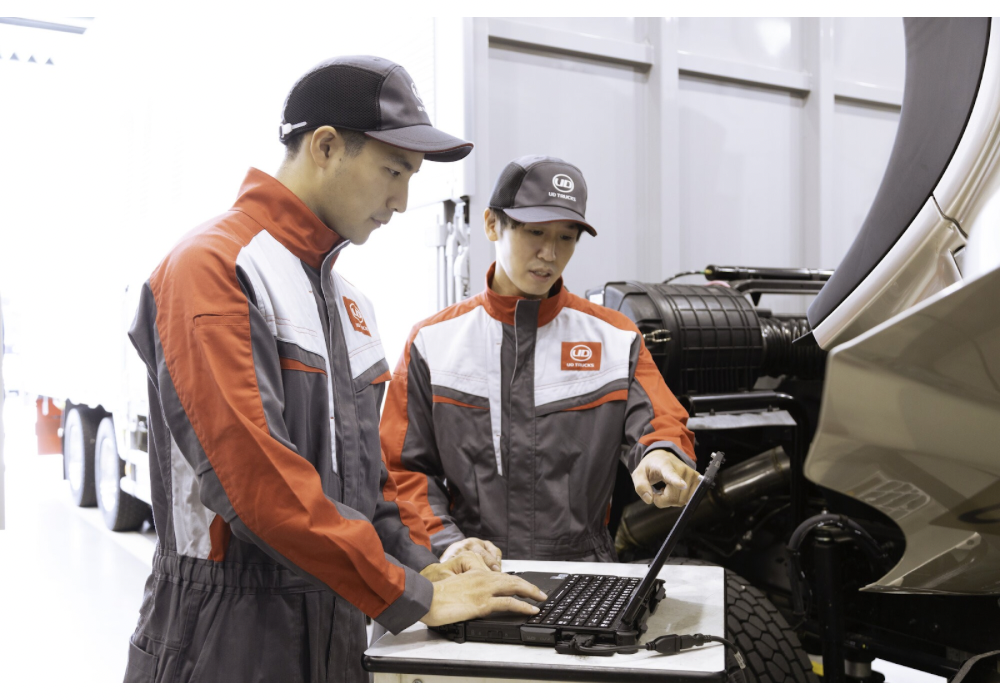
UD Trucks sets itself apart through an integrated support model, data-driven uptime services, and comprehensive maintenance contracts.
Comprehensive support backbone
UD Trucks has built a comprehensive support structure worldwide, combining expert technicians with the latest diagnostic equipment.
In markets such as Singapore and Australia, extended business hours and 24-hour road support accelerate return-to-service. UD technicians undergo regular upskilling and service vehicles using dedicated diagnostic tools and genuine parts—bringing deep, model-specific expertise to every job.
With two-year parts warranties and highly skilled workmanship, UD Trucks standardizes service quality, strengthens reliability, and increases customer peace of mind.
Preventive maintenance powered by data
UD Trucks leverages telematics to lead in preventive maintenance.
The UD-TRUST program ranges from Standard periodic inspections to Ultimate, which provides full coverage, including engine and electrical systems. Standard focuses on preventive checks—belts, oils, filters—to catch early signs of failure.
UD Telematics monitors fuel use, location, and driving patterns in real time. For UD-TRUST Ultimate, telematics-based early warnings and remote support are included.
Together, these tools meaningfully reduce unexpected failures and downtime.
Flexible, comprehensive maintenance contracts
UD Trucks provides three customizable plans tailored to actual use: Basic (routine inspections + consumables), Extra (adds brake and clutch repairs), and Ultimate (full support, including electrical and driveline). The Ultimate plan extends coverage to electrical, engine, and steering systems, and includes road support and telematics for an end-to-end service experience.
Early termination is possible during the contract term, and both service levels and coverage can be adjusted by market and customer need—ensuring you receive neither too much nor too little, but the right level of service.
Takeaway: In the era where maintenance makes the difference, choose a partner that “keeps supporting you”
Planned preventive maintenance is now central to heavy-duty truck operations.
Your uptime and operating costs depend on how effectively you can prevent unexpected failures. By choosing a partner with data-driven preventive capabilities, a strong support backbone, and flexible contract options, you can build a safer, more reliable operation.
Compare each manufacturer’s support program—and select a partner you can trust for the long term.
